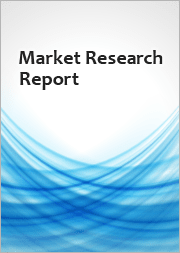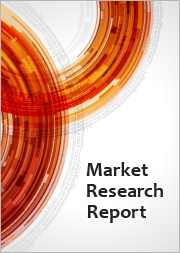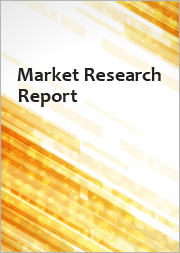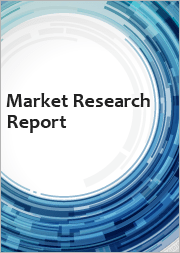
|
시장보고서
상품코드
1701248
세계의 정밀의료 분야 인공지능(AI) 시장 규모, 점유율, 동향 분석 보고서 : 기술별, 컴포넌트별, 치료 용도별, 지역별, 부문 예측(2025-2030년)Artificial Intelligence In Precision Medicine Market Size, Share & Trends Analysis Report By Technology, By Component, By Therapeutic Application, By Region, And Segment Forecasts, 2025 - 2030 |
||||||
정밀의료 분야 인공지능(AI) 시장의 성장과 동향 :
Grand View Research, Inc.의 최신 보고서에 따르면, 정밀의료 분야 인공지능 세계 시장 규모는 2030년까지 145억 3,000만 달러에 달하고, 2025-2030년 연평균 36.23%의 성장률을 보일 것으로 예측됩니다.
디지털 헬스케어와 임상 의료 기록에 대한 수요 증가가 정밀의료 분야의 AI 시장을 주도하고 있습니다. 헬스케어 IT의 발전으로 헬스케어에서 전자 의료 기록(EMR)에 대한 수요가 크게 증가하고 있습니다. 적시에 디지털 방식으로 의료 서비스를 제공하기 위한 중요한 용도 중 하나는 의료기관 내에서 권한이 부여된 직원이 액세스, 관리 및 생성하는 전자 의료 기록(EMR)입니다. 또한, EMR의 사용은 빠르게 확대되고 있으며, 더 큰 발전과 더 쉬운 용도이 필요하게 되었습니다.
미국 비영리 의료 단체인 헨리 J. 카이저 가족 재단에 따르면, 미국 주민의 45%가 의료 산업의 치료의 질이 향상되었다고 생각합니다. 정밀의료 분야에서 웨어러블의 인기가 높아지면서 헬스케어에 혁명을 가져왔고, 개인의 건강을 능동적으로 관리할 수 있는 힘을 부여하고 있습니다. 스마트워치, 피트니스 트래커, 바이오센서는 수요가 많은 웨어러블 기기 중 하나입니다. 이러한 기기들은 다양한 건강 지표에 대한 실시간 데이터 수집을 제공함으로써 귀중한 도구가 되고 있습니다. 웨어러블은 생체 신호, 신체 활동, 수면 패턴 및 기타 생체 데이터를 지속적으로 모니터링하여 풍부한 정보를 제공합니다.
이러한 종합적인 개인 건강 상태 파악을 통해 의료 서비스 제공업체는 개인의 필요에 따라 치료 계획과 개입 방법을 개인화할 수 있습니다. 집단 건강, 만성 질환 관리, 의료 영상에 이르기까지 다양한 헬스케어 서비스가 크게 개선되고 있으며, 코로나19 관리에서 AI의 활용은 시장 성장 확대에 중요한 역할을 하고 있습니다. 일례로 존스홉킨스 공중보건대학원 팀이 개발한 코로나19 사망 위험 계산기는 AI를 활용하여 공중보건 이니셔티브를 안내하고 N-95 마스크 등 예방에 필요한 자원을 할당하는 데 활용했습니다.
정밀의료 분야 인공지능(AI) 시장 보고서의 주요 내용
- 2024년 소프트웨어가 41.86%의 매출 점유율을 차지헀으며, 예측 기간 동안 가장 빠른 CAGR로 성장할 것으로 예측됩니다.
- 기술별로는 딥러닝 분야가 2024년 33.60%의 매출 점유율로 시장을 장악했습니다.
- 종양학은 2024년 30.25%의 큰 매출 점유율을 차지했습니다.
목차
제1장 조사 방법과 범위
제2장 주요 요약
제3장 정밀의료 분야 인공지능(AI) 시장 변수, 동향, 범위
- 시장 계통 전망
- 상위 시장 전망
- 관련/부수 시장 전망
- 시장 역학
- 시장 성장요인 분석
- 시장 성장 억제요인 분석
- 시장 기회 분석
- 시장이 해결해야 할 과제 분석
- 프래시죤 의료 시장 분석 툴 인공지능
- 업계 분석 - Porter의 Five Forces 분석
- PESTEL 분석
- COVID-19의 영향
- 사례 연구
- 기술 진보
제4장 정밀의료 분야 인공지능(AI) 시장 : 컴포넌트 추정·동향 분석
- 컴포넌트 시장 점유율, 2024년 및 2030년
- 부문 대시보드
- 세계의 정밀의료 분야 인공지능(AI) 시장 전망
- 소프트웨어
- 하드웨어
- 서비스
제5장 정밀의료 분야 인공지능(AI) 시장 : 기술 추정·동향 분석
- 테크놀러지 시장 점유율, 2024년과 2030년
- 부문 대시보드
- 세계의 정밀의료 분야 인공지능(AI) 시장 전망
- 딥러닝
- 쿼리
- 자연언어처리
- 상황 인식 처리
제6장 정밀의료 분야 인공지능(AI) 시장 : 치료 용도 추정·동향 분석
- 치료 용도 시장 점유율, 2024년과 2030년
- 부문 대시보드
- 세계의 정밀의료 분야 인공지능(AI) 시장 전망
- 심장병학
- 종양학
- 호흡기
- 신경학
- 기타
제7장 정밀의료 분야 인공지능(AI) 시장 : 지역 추정·동향 분석, 컴포넌트별, 기술별, 치료 용도별
- 지역별 시장 점유율 분석, 2024년 및 2030년
- 지역 시장 대시보드
- 세계 지역 시장 스냅숏
- 시장 규모, 예측 동향 분석, 2018-2030년까지 :
- 북미
- 미국
- 캐나다
- 멕시코
- 유럽
- 영국
- 독일
- 프랑스
- 이탈리아
- 스페인
- 노르웨이
- 스웨덴
- 덴마크
- 아시아태평양
- 일본
- 중국
- 인도
- 호주
- 한국
- 태국
- 라틴아메리카
- 브라질
- 아르헨티나
- 중동 및 아프리카
- 남아프리카공화국
- 사우디아라비아
- 아랍에미리트(UAE)
- 쿠웨이트
제8장 경쟁 구도
- 주요 시장 진출기업의 최근 동향과 영향 분석
- 기업/경쟁 분류
- 혁신기업
- 벤더 구도
- 주요 기업의 시장 점유율 분석, 2023년
- BioXcel Therapeutics Inc.
- Sanofi
- NVIDIA Corporation
- Alphabet Inc.(Google Inc.)
- IBM
- Microsoft
- Intel Corp.
- AstraZeneca plc
- GE Healthcare
- Enlitic, Inc.
Artificial Intelligence In Precision Medicine Market Growth & Trends:
The global artificial intelligence in precision medicine market size is estimated to reach USD 14.53 billion by 2030, registering to grow at a CAGR of 36.23% from 2025 to 2030 according to a new report by Grand View Research, Inc. The increasing demand for digital healthcare and clinical health records drives the market for AI in precision medicine. The demand for Electronic Medical Records (EMRs) in healthcare is considerably growing due to advancements in healthcare IT. One of the important applications for delivering timely medical services digitally is Electronic Medical Records (EMRs) accessed, managed, and generated by authorized workers inside a healthcare institution. Furthermore, the usage of EMRs is expanding quickly, necessitating greater development and easier applications, which is accomplished through the medical industry's cutting-edge IT sector.
According to the Henry J. Kaiser Family Foundation, a nonprofit healthcare organization located in the U.S., 45% of U.S. residents believe that have enhanced the quality of care in the medical industry. The increasing popularity of wearables in precision medicine is revolutionizing healthcare and empowering individuals to manage their well-being actively. Smartwatches, fitness trackers, and biosensors are among the wearable devices that are in high demand. These devices offer real-time data collection on various health indicators, making them invaluable tools. Wearables provide a wealth of information by continuously monitoring vital signs, physical activity, sleep patterns, and other biometric data.
This comprehensive understanding of an individual's health status allows healthcare providers to personalize treatment plans and interventions to meet their needs. The COVID-19 pandemic has accelerated the adoption of AI in the healthcare sector. AI applications have significantly improved various healthcare services, from precision medicine and population health to chronic disease management and medical imaging. The utilization of AI in managing COVID-19 has played a key role in expanding the market growth. An example is the development of a COVID-19 mortality risk calculator by a Johns Hopkins School of Public Health team, which utilized AI to guide public health initiatives and allocate resources for prevention, such as N-95 masks.
Artificial Intelligence In Precision Medicine Market Report Highlights:
- Software had a significant revenue share of 41.86% in 2024 and is expected to grow at the fastest CAGR during the forecast period.
- Based on technology, the deep learning segment dominated the market with a revenue share of 33.60% in 2024.
- Oncology had a significant revenue share of 30.25% in 2024.
Table of Contents
Chapter 1. Methodology and Scope
- 1.1. Market Segmentation & Scope
- 1.1.1. Component
- 1.1.2. Technology
- 1.1.3. Therapeutic application
- 1.1.4. Regional scope
- 1.1.5. Estimates and forecast timeline.
- 1.2. Research Methodology
- 1.3. Information Procurement
- 1.3.1. Purchased database.
- 1.3.2. GVR's internal database
- 1.3.3. Secondary sources
- 1.3.4. Primary research
- 1.3.5. Details of primary research
- 1.4. Information or Data Analysis
- 1.4.1. Data analysis models
- 1.5. Market Formulation & Validation
- 1.6. Model Details
- 1.6.1. Commodity flow analysis (Model 1)
- 1.7. List of Secondary Sources
- 1.8. List of Primary Sources
- 1.9. Objectives
Chapter 2. Executive Summary
- 2.1. Market Outlook
- 2.2. Segment Outlook
- 2.2.1. Component outlook
- 2.2.2. Technology outlook
- 2.2.3. Therapeutic application outlook
- 2.2.4. Regional outlook
- 2.3. Competitive Insights
Chapter 3. Artificial Intelligence In Precision Medicine Market Variables, Trends & Scope
- 3.1. Market Lineage Outlook
- 3.1.1. Parent market outlook
- 3.1.2. Related/ancillary market outlook
- 3.2. Market Dynamics
- 3.2.1. Market driver analysis
- 3.2.2. Market restraint analysis
- 3.2.3. Market opportunity analysis
- 3.2.4. Market challenges analysis
- 3.3. Artificial Intelligence In Precision Medicine Market Analysis Tools
- 3.3.1. Industry Analysis - Porter's
- 3.3.1.1. Supplier power
- 3.3.1.2. Buyer power
- 3.3.1.3. Substitution threat
- 3.3.1.4. Threat of new entrant
- 3.3.1.5. Competitive rivalry
- 3.3.2. PESTEL Analysis
- 3.3.2.1. Political landscape
- 3.3.2.2. Economic landscape
- 3.3.2.3. Social landscape
- 3.3.2.4. Technological landscape
- 3.3.2.5. Environmental landscape
- 3.3.2.6. Legal landscape
- 3.3.3. COVID-19 Impact
- 3.3.1. Industry Analysis - Porter's
- 3.4. Case Study
- 3.5. Technological Advancement
Chapter 4. Artificial Intelligence In Precision Medicine Market: Component Estimates & Trend Analysis
- 4.1. Component Market Share, 2024 & 2030
- 4.2. Segment Dashboard
- 4.3. Global Artificial Intelligence In Precision Medicine Market by Component Outlook
- 4.4. Software
- 4.4.1. Market estimates and forecast 2018 to 2030 (USD Million)
- 4.5. Hardware
- 4.5.1. Market estimates and forecast 2018 to 2030 (USD Million)
- 4.6. Services
- 4.6.1. Market estimates and forecast 2018 to 2030 (USD Million)
Chapter 5. Artificial Intelligence In Precision Medicine Market: Technology Estimates & Trend Analysis
- 5.1. Technology Market Share, 2024 & 2030
- 5.2. Segment Dashboard
- 5.3. Global Artificial Intelligence In Precision Medicine Market by Technology Outlook
- 5.4. Deep Learning
- 5.4.1. Market estimates and forecast 2018 to 2030 (USD Million)
- 5.5. Querying Method
- 5.5.1. Market estimates and forecast 2018 to 2030 (USD Million)
- 5.6. Natural Language Processing
- 5.6.1. Market estimates and forecast 2018 to 2030 (USD Million)
- 5.7. Context Aware Processing
- 5.7.1. Market estimates and forecast 2018 to 2030 (USD Million)
Chapter 6. Artificial Intelligence In Precision Medicine Market: Therapeutic Application Estimates & Trend Analysis
- 6.1. Therapeutic Application Market Share, 2024 & 2030
- 6.2. Segment Dashboard
- 6.3. Global Artificial Intelligence In Precision Medicine Market by Therapeutic Application Outlook
- 6.4. Cardiology
- 6.4.1. Market estimates and forecast 2018 to 2030 (USD Million)
- 6.5. Oncology
- 6.5.1. Market estimates and forecast 2018 to 2030 (USD Million)
- 6.6. Respiratory
- 6.6.1. Market estimates and forecast 2018 to 2030 (USD Million)
- 6.7. Neurology
- 6.7.1. Market estimates and forecast 2018 to 2030 (USD Million)
- 6.8. Others
- 6.8.1. Market estimates and forecast 2018 to 2030 (USD Million)
Chapter 7. Artificial Intelligence In Precision Medicine Market: Regional Estimates & Trend Analysis, By Component, By Technology, By Therapeutic Application
- 7.1. Regional Market Share Analysis, 2024 & 2030
- 7.2. Regional Market Dashboard
- 7.3. Global Regional Market Snapshot
- 7.4. Market Size, & Forecasts Trend Analysis, 2018 to 2030:
- 7.5. North America
- 7.5.1. U.S.
- 7.5.1.1. Key country dynamics
- 7.5.1.2. Regulatory framework
- 7.5.1.3. Competitive scenario
- 7.5.1.4. U.S. market estimates and forecasts 2018 to 2030 (USD Million)
- 7.5.2. Canada
- 7.5.2.1. Key country dynamics
- 7.5.2.2. Regulatory framework
- 7.5.2.3. Competitive scenario
- 7.5.2.4. Canada market estimates and forecasts 2018 to 2030 (USD Million)
- 7.5.3. Mexico
- 7.5.3.1. Key country dynamics
- 7.5.3.2. Regulatory framework
- 7.5.3.3. Competitive scenario
- 7.5.3.4. Mexico market estimates and forecasts 2018 to 2030 (USD Million)
- 7.5.1. U.S.
- 7.6. Europe
- 7.6.1. UK
- 7.6.1.1. Key country dynamics
- 7.6.1.2. Regulatory framework
- 7.6.1.3. Competitive scenario
- 7.6.1.4. UK market estimates and forecasts 2018 to 2030 (USD Million)
- 7.6.2. Germany
- 7.6.2.1. Key country dynamics
- 7.6.2.2. Regulatory framework
- 7.6.2.3. Competitive scenario
- 7.6.2.4. Germany market estimates and forecasts 2018 to 2030 (USD Million)
- 7.6.3. France
- 7.6.3.1. Key country dynamics
- 7.6.3.2. Regulatory framework
- 7.6.3.3. Competitive scenario
- 7.6.3.4. France market estimates and forecasts 2018 to 2030 (USD Million)
- 7.6.4. Italy
- 7.6.4.1. Key country dynamics
- 7.6.4.2. Regulatory framework
- 7.6.4.3. Competitive scenario
- 7.6.4.4. Italy market estimates and forecasts 2018 to 2030 (USD Million)
- 7.6.5. Spain
- 7.6.5.1. Key country dynamics
- 7.6.5.2. Regulatory framework
- 7.6.5.3. Competitive scenario
- 7.6.5.4. Spain market estimates and forecasts 2018 to 2030 (USD Million)
- 7.6.6. Norway
- 7.6.6.1. Key country dynamics
- 7.6.6.2. Regulatory framework
- 7.6.6.3. Competitive scenario
- 7.6.6.4. Norway market estimates and forecasts 2018 to 2030 (USD Million)
- 7.6.7. Sweden
- 7.6.7.1. Key country dynamics
- 7.6.7.2. Regulatory framework
- 7.6.7.3. Competitive scenario
- 7.6.7.4. Sweden market estimates and forecasts 2018 to 2030 (USD Million)
- 7.6.8. Denmark
- 7.6.8.1. Key country dynamics
- 7.6.8.2. Regulatory framework
- 7.6.8.3. Competitive scenario
- 7.6.8.4. Denmark market estimates and forecasts 2018 to 2030 (USD Million)
- 7.6.1. UK
- 7.7. Asia Pacific
- 7.7.1. Japan
- 7.7.1.1. Key country dynamics
- 7.7.1.2. Regulatory framework
- 7.7.1.3. Competitive scenario
- 7.7.1.4. Japan market estimates and forecasts 2018 to 2030 (USD Million)
- 7.7.2. China
- 7.7.2.1. Key country dynamics
- 7.7.2.2. Regulatory framework
- 7.7.2.3. Competitive scenario
- 7.7.2.4. China market estimates and forecasts 2018 to 2030 (USD Million)
- 7.7.3. India
- 7.7.3.1. Key country dynamics
- 7.7.3.2. Regulatory framework
- 7.7.3.3. Competitive scenario
- 7.7.3.4. India market estimates and forecasts 2018 to 2030 (USD Million)
- 7.7.4. Australia
- 7.7.4.1. Key country dynamics
- 7.7.4.2. Regulatory framework
- 7.7.4.3. Competitive scenario
- 7.7.4.4. Australia market estimates and forecasts 2018 to 2030 (USD Million)
- 7.7.5. South Korea
- 7.7.5.1. Key country dynamics
- 7.7.5.2. Regulatory framework
- 7.7.5.3. Competitive scenario
- 7.7.5.4. South Korea market estimates and forecasts 2018 to 2030 (USD Million)
- 7.7.6. Thailand
- 7.7.6.1. Key country dynamics
- 7.7.6.2. Regulatory framework
- 7.7.6.3. Competitive scenario
- 7.7.6.4. Singapore market estimates and forecasts 2018 to 2030 (USD Million)
- 7.7.1. Japan
- 7.8. Latin America
- 7.8.1. Brazil
- 7.8.1.1. Key country dynamics
- 7.8.1.2. Regulatory framework
- 7.8.1.3. Competitive scenario
- 7.8.1.4. Brazil market estimates and forecasts 2018 to 2030 (USD Million)
- 7.8.2. Argentina
- 7.8.2.1. Key country dynamics
- 7.8.2.2. Regulatory framework
- 7.8.2.3. Competitive scenario
- 7.8.2.4. Argentina market estimates and forecasts 2018 to 2030 (USD Million)
- 7.8.1. Brazil
- 7.9. MEA
- 7.9.1. South Africa
- 7.9.1.1. Key country dynamics
- 7.9.1.2. Regulatory framework
- 7.9.1.3. Competitive scenario
- 7.9.1.4. South Africa market estimates and forecasts 2018 to 2030 (USD Million)
- 7.9.2. Saudi Arabia
- 7.9.2.1. Key country dynamics
- 7.9.2.2. Regulatory framework
- 7.9.2.3. Competitive scenario
- 7.9.2.4. Saudi Arabia market estimates and forecasts 2018 to 2030 (USD Million)
- 7.9.3. UAE
- 7.9.3.1. Key country dynamics
- 7.9.3.2. Regulatory framework
- 7.9.3.3. Competitive scenario
- 7.9.3.4. UAE market estimates and forecasts 2018 to 2030 (USD Million)
- 7.9.4. Kuwait
- 7.9.4.1. Key country dynamics
- 7.9.4.2. Regulatory framework
- 7.9.4.3. Competitive scenario
- 7.9.4.4. Kuwait market estimates and forecasts 2018 to 2030 (USD Million)
- 7.9.1. South Africa
Chapter 8. Competitive Landscape
- 8.1. Recent Developments & Impact Analysis, By Key Market Participants
- 8.2. Company/Competition Categorization
- 8.3. Innovators
- 8.4. Vendor Landscape
- 8.4.1. Key company market share analysis, 2023
- 8.4.2. BioXcel Therapeutics Inc.
- 8.4.2.1. Company overview
- 8.4.2.2. Financial performance
- 8.4.2.3. Technology Type benchmarking
- 8.4.2.4. Strategic initiatives
- 8.4.3. Sanofi
- 8.4.3.1. Company overview
- 8.4.3.2. Financial performance
- 8.4.3.3. Technology Type benchmarking
- 8.4.3.4. Strategic initiatives
- 8.4.4. NVIDIA Corporation
- 8.4.4.1. Company overview
- 8.4.4.2. Financial performance
- 8.4.4.3. Technology Type benchmarking
- 8.4.4.4. Strategic initiatives
- 8.4.5. Alphabet Inc. (Google Inc.)
- 8.4.5.1. Company overview
- 8.4.5.2. Financial performance
- 8.4.5.3. Technology Type benchmarking
- 8.4.5.4. Strategic initiatives
- 8.4.6. IBM
- 8.4.6.1. Company overview
- 8.4.6.2. Financial performance
- 8.4.6.3. Technology Type benchmarking
- 8.4.6.4. Strategic initiatives
- 8.4.7. Microsoft
- 8.4.7.1. Company overview
- 8.4.7.2. Financial performance
- 8.4.7.3. Technology Type benchmarking
- 8.4.7.4. Strategic initiatives
- 8.4.8. Intel Corp.
- 8.4.8.1. Company overview
- 8.4.8.2. Financial performance
- 8.4.8.3. Technology Type benchmarking
- 8.4.8.4. Strategic initiatives
- 8.4.9. AstraZeneca plc
- 8.4.9.1. Company overview
- 8.4.9.2. Financial performance
- 8.4.9.3. Technology Type benchmarking
- 8.4.9.4. Strategic initiatives
- 8.4.10. GE Healthcare
- 8.4.10.1. Company overview
- 8.4.10.2. Financial performance
- 8.4.10.3. Technology Type benchmarking
- 8.4.10.4. Strategic initiatives
- 8.4.11. Enlitic, Inc.
- 8.4.11.1. Company overview
- 8.4.11.2. Financial performance
- 8.4.11.3. Technology Type benchmarking
- 8.4.11.4. Strategic initiatives
(주말 및 공휴일 제외)









